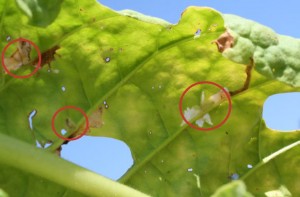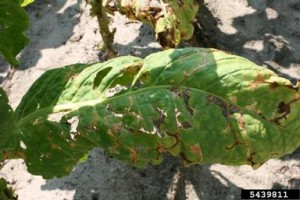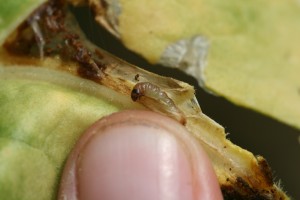Scouting for Tobacco Splitworm
go.ncsu.edu/readext?307197
en Español / em Português
El inglés es el idioma de control de esta página. En la medida en que haya algún conflicto entre la traducción al inglés y la traducción, el inglés prevalece.
Al hacer clic en el enlace de traducción se activa un servicio de traducción gratuito para convertir la página al español. Al igual que con cualquier traducción por Internet, la conversión no es sensible al contexto y puede que no traduzca el texto en su significado original. NC State Extension no garantiza la exactitud del texto traducido. Por favor, tenga en cuenta que algunas aplicaciones y/o servicios pueden no funcionar como se espera cuando se traducen.
Português
Inglês é o idioma de controle desta página. Na medida que haja algum conflito entre o texto original em Inglês e a tradução, o Inglês prevalece.
Ao clicar no link de tradução, um serviço gratuito de tradução será ativado para converter a página para o Português. Como em qualquer tradução pela internet, a conversão não é sensivel ao contexto e pode não ocorrer a tradução para o significado orginal. O serviço de Extensão da Carolina do Norte (NC State Extension) não garante a exatidão do texto traduzido. Por favor, observe que algumas funções ou serviços podem não funcionar como esperado após a tradução.
English
English is the controlling language of this page. To the extent there is any conflict between the English text and the translation, English controls.
Clicking on the translation link activates a free translation service to convert the page to Spanish. As with any Internet translation, the conversion is not context-sensitive and may not translate the text to its original meaning. NC State Extension does not guarantee the accuracy of the translated text. Please note that some applications and/or services may not function as expected when translated.
Collapse ▲When to scout for tobacco splitworm
Tobacco splitworm infestations can occasionally develop post transplant, particularly in areas where white potatoes, another host of this small caterpillar, are grown. However, splitworm infestations are most common and problematic when they develop post topping, near harvest. Tobacco splitworms may have 2 to 3 generations per year in commercial tobacco. A small, typically not economically significant generation can occur in mid summer, just following topping. Fields where this midsummer generation is observed are at risk for damage near harvest and should be carefully scouted for the rest of the season. Fields where the midsummer splitworm generation is not observed are rarely at risk for harvest period damage and additional scouting is not necessary.
What part of the plant to scout for tobacco splitworms
Early season tobacco splitworm larvae may feed throughout the entire plant. Mid- and late-season tobacco splitworm larvae feed on the lower 1/3 of plant unless leaves have been harvested. Following harvest, larvae may feed on the lowest stalk leaf available. Therefore, if you are determining if a field is at risk for harvest period damage, observe the lower 1/3 of plants for the month following topping.
How to scout for tobacco splitworm
Tobacco splitworm larvae are leaf miners and create yellow to brown “blotch mines” in leaves.

Tobacco leaf with several splitworm mines containing live larvae, circled. Photo: Hannah Burrack
Mines remain on leaves even after tobacco splitworm larvae have left them, so when scouting is important to determine if a mine contains a live larvae or is old. Tear open the mine and check for a small cream, tan, or pinkish caterpillar. Mines may also contain brown “frass” or insect droppings, which can resemble soil or loose cigarette tobacco.
Mines may darken and tear open after larvae develop, and leaves many contain a mixture of active mines containing live larvae and old mines.

Splitworm feeding creates brown or yellow mines in the leaves. This damage can accumulate on leaves over the course of a season. Photo: Hannah Burrack.
Tobacco splitworm thresholds
There is no research-based economic threshold for tobacco splitworms, but if 10% or more of plants are infested with ten or more mines treatment may be justified. Few, if any, insecticides are effective against tobacco splitworm larvae, and timely harvest may be the more effective means of curtailing an infestation.



